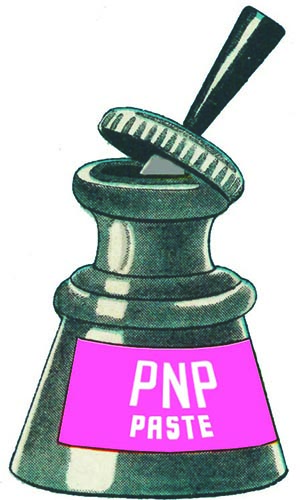Do you have photographic slide collections, tucked away in boxes or folders or filing cabinets? You do?! Well then, this month, look through them carefully. Colour slides are not an especially stable medium. (Neither are colour prints, for that matter—so if you don’t have any slides, look at your prints instead). Fading and colour shifts may be occurring—some film types are especially prone. (For more information see this chapter (PDF) of Henry Wilhelm’s book The Permanence and Care of Color Photographs). Check to see if any of them are stored in old polyvinylchloride (PVC) storage sleeves. (PVC is heavy, “slick” and smooth, when compared to the newer polypropylene sleeves). As PVC ages plasticisers migrate out, leaving a sticky residue on the surface of the plastic (and your slides)—it might look a bit like the plastic is “sweating” (see picture below). PVC can also generate hydrochloric acid that hastens deterioration. If you find any old PVC sleeves, transfer all affected slides to archival polypropylene sleeves (or a good quality storage box) as soon as you can. They’ll still have plasticizer residue on them (the only really good way to remove this is to send them to a photography lab that can remove them from their mounts and wash them), but it’s best just to get them out of the PVC as soon as possible.
It might also be a good idea to think about digitizing your slides—they most certainly will not last for ever. You can do this yourself or have it done commercially. Either way, it is a good idea to take overall “reference” photographs of entire sleeves, over a light box, so you can see both the image and any notes you’ve written on the slide mount. Digitising opens a big can of worms in itself—Museums & Galleries NSW has a guide to get you started, at least—but keeping track of ‘metadata' (what the slide is a picture OF) and making sure your finished image files are in a relatively archival format (e.g. TIFs rather than JPGs) are two things to start with. Then you just have to remember to back them up and continually migrate them to new storage mediums…but it might be fun to go back and look at them all, right? Right??
